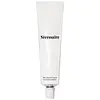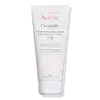What's inside
What's inside
 Key Ingredients
Key Ingredients

No key ingredients
 Benefits
Benefits

 Concerns
Concerns

 Ingredients Side-by-side
Ingredients Side-by-side

Water
Skin ConditioningDicaprylyl Carbonate
EmollientGlycerin
HumectantCaprylic/Capric Triglyceride
MaskingCetearyl Alcohol
EmollientSqualane
EmollientGlyceryl Stearate
EmollientCetearyl Olivate
Butyrospermum Parkii Butter
Skin ConditioningSorbitan Olivate
EmulsifyingGlyceryl Caprylate
EmollientNiacinamide
SmoothingTocopherol
AntioxidantSclerocarya Birrea Seed Oil
HumectantSclerocarya Birrea Seed Butter
EmollientCetyl Hydroxyethylcellulose
Emulsion StabilisingCaprylhydroxamic Acid
Palmitoyl Dipeptide-5 Diaminobutyroyl Hydroxythreonine
Skin ConditioningPalmitoyl Dipeptide-5 Diaminohydroxybutyrate
Skin ConditioningPalmitoyl Tripeptide-1
Skin ConditioningPalmitoyl Tetrapeptide-7
Skin ConditioningPalmitoyl Hexapeptide-12
Skin ConditioningHydrogenated Lecithin
EmulsifyingHydrated Silica
AbrasiveSilica Dimethyl Silylate
EmollientCeramide Ag
HumectantCeramide AP
Skin ConditioningCeramide Ng
Skin ConditioningCeramide NP
Skin ConditioningCeramide EOP
Skin ConditioningTetrasodium Glutamate Diacetate
Cholesterol
EmollientDipropylene Glycol
HumectantDisodium Phosphate
BufferingSodium Phosphate
BufferingSodium Hydroxide
BufferingWater, Dicaprylyl Carbonate, Glycerin, Caprylic/Capric Triglyceride, Cetearyl Alcohol, Squalane, Glyceryl Stearate, Cetearyl Olivate, Butyrospermum Parkii Butter, Sorbitan Olivate, Glyceryl Caprylate, Niacinamide, Tocopherol, Sclerocarya Birrea Seed Oil, Sclerocarya Birrea Seed Butter, Cetyl Hydroxyethylcellulose, Caprylhydroxamic Acid, Palmitoyl Dipeptide-5 Diaminobutyroyl Hydroxythreonine, Palmitoyl Dipeptide-5 Diaminohydroxybutyrate, Palmitoyl Tripeptide-1, Palmitoyl Tetrapeptide-7, Palmitoyl Hexapeptide-12, Hydrogenated Lecithin, Hydrated Silica, Silica Dimethyl Silylate, Ceramide Ag, Ceramide AP, Ceramide Ng, Ceramide NP, Ceramide EOP, Tetrasodium Glutamate Diacetate, Cholesterol, Dipropylene Glycol, Disodium Phosphate, Sodium Phosphate, Sodium Hydroxide
Water
Skin ConditioningParaffinum Liquidum
EmollientMyreth-3 Myristate
EmollientPEG-45/Dodecyl Glycol Copolymer
Emulsion StabilisingDimethicone
EmollientAluminum Sucrose Octasulfate
Skin ConditioningOctyldodecanol
EmollientPEG-7 Glyceryl Cocoate
EmulsifyingAluminum Starch Octenylsuccinate
AbsorbentGlycerin
HumectantBeeswax
Emulsion StabilisingCetyl Alcohol
EmollientCopper Sulfate
Skin ConditioningDimethiconol
EmollientDisteardimonium Hectorite
StabilisingGlyceryl Stearate
EmollientMagnesium Sulfate
Phenoxyethanol
PreservativeSodium Benzoate
MaskingXanthan Gum
EmulsifyingZinc Sulfate
AntimicrobialWater, Paraffinum Liquidum, Myreth-3 Myristate, PEG-45/Dodecyl Glycol Copolymer, Dimethicone, Aluminum Sucrose Octasulfate, Octyldodecanol, PEG-7 Glyceryl Cocoate, Aluminum Starch Octenylsuccinate, Glycerin, Beeswax, Cetyl Alcohol, Copper Sulfate, Dimethiconol, Disteardimonium Hectorite, Glyceryl Stearate, Magnesium Sulfate, Phenoxyethanol, Sodium Benzoate, Xanthan Gum, Zinc Sulfate
 Reviews
Reviews

Ingredients Explained
These ingredients are found in both products.
Ingredients higher up in an ingredient list are typically present in a larger amount.
Glycerin is already naturally found in your skin. It helps moisturize and protect your skin.
A study from 2016 found glycerin to be more effective as a humectant than AHAs and hyaluronic acid.
As a humectant, it helps the skin stay hydrated by pulling moisture to your skin. The low molecular weight of glycerin allows it to pull moisture into the deeper layers of your skin.
Hydrated skin improves your skin barrier; Your skin barrier helps protect against irritants and bacteria.
Glycerin has also been found to have antimicrobial and antiviral properties. Due to these properties, glycerin is often used in wound and burn treatments.
In cosmetics, glycerin is usually derived from plants such as soybean or palm. However, it can also be sourced from animals, such as tallow or animal fat.
This ingredient is organic, colorless, odorless, and non-toxic.
Glycerin is the name for this ingredient in American English. British English uses Glycerol/Glycerine.
Learn more about GlycerinGlyceryl Stearate is a mix of glycerin and stearic acid.
It is used to stabilize the mixing of water and oil ingredients. By preventing these ingredients from separating, it can help elongate shelf life. It can also help thicken the product's texture.
As an emollient, it helps soften skin and supports barrier-replenishing ingredients.
In cosmetics, Glyceryl Stearate is often made from vegetable oils or synthetically produced.
This ingredient may not be fungal-acne safe
Fun fact: The human body also creates Glyceryl Stearate naturally.
Learn more about Glyceryl StearateWater. It's the most common cosmetic ingredient of all. You'll usually see it at the top of ingredient lists, meaning that it makes up the largest part of the product.
So why is it so popular? Water most often acts as a solvent - this means that it helps dissolve other ingredients into the formulation.
You'll also recognize water as that liquid we all need to stay alive. If you see this, drink a glass of water. Stay hydrated!
Learn more about Water